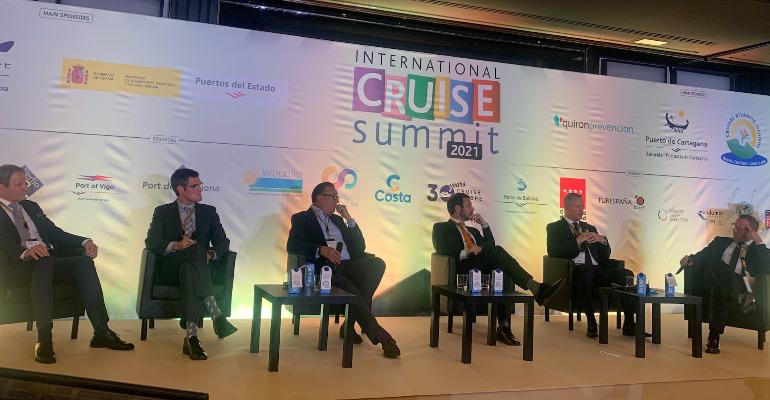John Portelli, general manager, Roma Cruise Terminal said next year will not bring ‘2019 numbers’ of cruise passengers, but will be ‘a transition year, looking to 2023 as a return to pre pandemic numbers.’
His forecast was echoed by Alessandro Carollo, director of government relations, Royal Caribbean Group who also described 2022 as a ‘transition’ year with ‘2023 the full on year,’ and Leslie Peden, CCO, Celestyal Cruises highlighting that current predictions are for 70% of 2019 business to come back in 2022 and that ‘2023 will normalise for sure.’
Carnival UK’s VP port and shore excursions, Sander Groothuis, said ‘2022 is an opportunity year - to learn from what we did in 2021,’ with Portelli reproving of some Italian officials’ mixed messages to the public on the safety of cruising. Carollo noted that there ‘has to be strong consistency of protocols.’
The remarks came on the first day of Madrid’s International Cruise Summit 2021 (November 17-18) in the conference session, ‘The 2021 Sense Check for the Future’ moderated by cruise consultant Mark Robinson.
COVID-19 screening
The complexity of testing extensive numbers of cruise passengers for COVID-19 once passenger capacity returns to 100% was underscored by Portelli and Groothuis, with the latter exclaiming, ‘How are we going to deal with that?’ Carollo stated that if such testing is to continue, a more comfortable experience should be created for passengers, involving ‘more space, more time, new exits’ allocated, given that ‘some ports had to build outside marquees for screening, testing…’ Roma Cruise Terminal has to routinely alter its passenger screening configuration, with four different systems required by cruise lines.
Alexander Napp, MD, PWL Port Services commended TUI Cruises and MSC Cruises for being ‘very innovative’ to introduce testing early on in the pandemic, musing, ‘I know every nose’ as he discussed the process of 4,000 MSC Cruises’ passengers receiving a nasal swab for sailing onboard one MSC Cruises vessel.
New opportunities
Napp said more widespread winter cruising, as seen in Germany with 2021 sailings from Bremerhaven to the Caribbean, is a lasting outcome of COVID-19 that presents more opportunity, but conceded: ‘We’ll see way more homeland cruising. People don’t like to fly, they like to jump on ship in front of their house.’
Peden described airlines approaching cruise lines for dialogue on collaboration and best practice presented ‘a great opportunity’ given Thessaloniki, for example, is able to serve as an embarkation port because of its significant air potential. ‘Working with airlines is beneficial to the guest experience,’ he asserted.
Portelli said an enduring result of the pandemic is the ‘team work we’ve built over the last year-and-a-half.’
Peden remarked that ‘digitalisation has really been amplified’ in the last 18 months, with greater adoption of digital technology across the business.
Copyright © 2024. All rights reserved. Seatrade, a trading name of Informa Markets (UK) Limited.
Add Seatrade Cruise News to your Google News feed.  |

